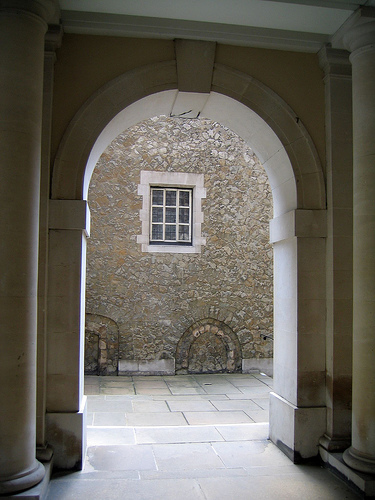Inner Temple Lane
A walk through the legal quarter of the city, enjoying the peacefulness of the leafy streets is something of a pleasure, especially when the walk takes in Inner Temple Lane. At the top of the lane you will find the incredible gatehouse. The gatehouse is a throwback to a bygone time; a lucky survivor of the Great Fire of London, it is the last of the timber framed town houses from the Jacobean period. It is a lone shadow of the past in a city that is constantly regenerating. It has not had an easy life since the fire though, and went neglected and abused for centuries until it was completely abandoned. It was only restored to its former glory around one hundred years ago, but thankfully care has been taken to retain its original Jacobean features. This is one of those beautifully unique throw backs to the past that can be found all over the city, providing that you know where to look of course.

The Templar Connection
This beautiful building was part of a grand estate, owned by the Knights Templar in the twelfth century. Over the years another order took control of the stone archway, these being the Knights Hospitallers of St John of Jerusalem. They leased the accommodation on the estate to lawyers and the like, with part of this last remaining building being an ale house called The Hand Inn, which was later named the Princes Arms for Henry, Prince of Wales the son of King James I who only lived to the age of eighteen. After the Great Fire the tavern was reborn as The Fountain before being leased to a lady who used it to display her waxwork figures of the celebrities of the time, and some of the more gruesome parts of the city’s history. One of the most popular exhibits was that of a model operated by clockwork which would kick people as they walked by.
A Hidden History
At the close of the nineteenth century the outside of the building was in a very sorry state. Much of the building had been boarded over. While the downstairs room had several occupants the upstairs room was left as was. Thankfully the original panelling and incredible and original Jacobean plasterwork were still intact as were the initials P.H. in honour of Prince Henry. Although the link between the building and the royal family has never been substantiated there have been claims made throughout history that there was some kind of personal link between the Price and the building. During the reign of Queen Victoria it was also claimed that the building was once the Palace used by King Henry VIII and the infamous Cardinal Wolsey, the building is also widely considered to have been used by the Duchy of Cornwall as its council chambers.
These days the building houses a small museum with the exhibits on display that are supplied on loan from the Samuel Pepys Society, the museum is open on most afternoons through the week.

